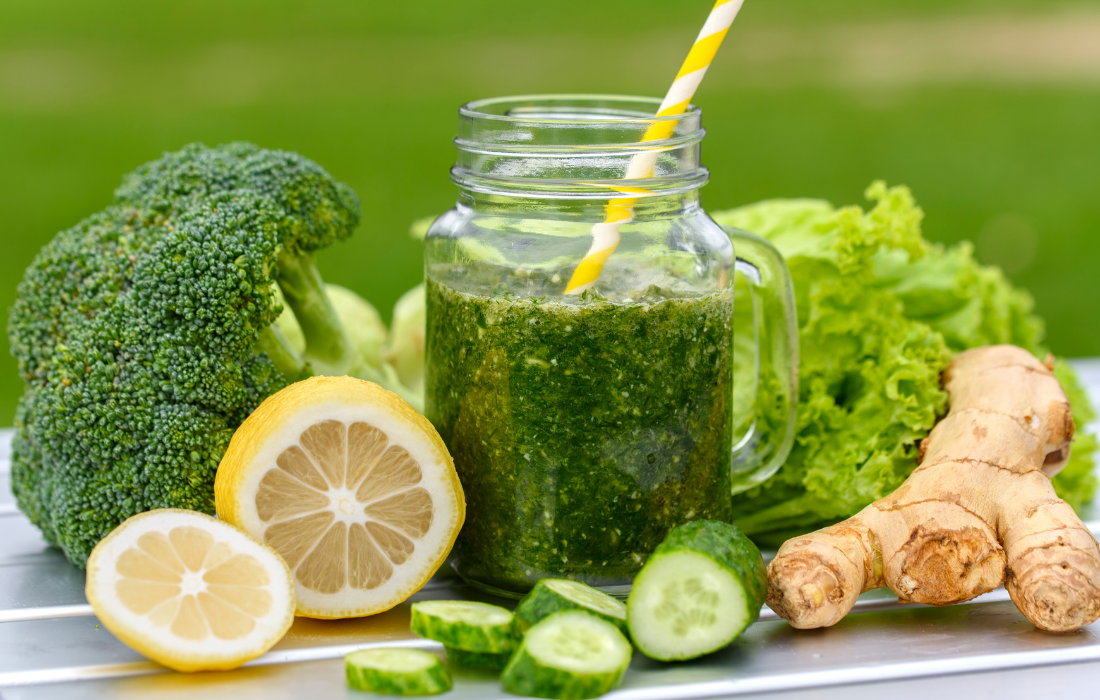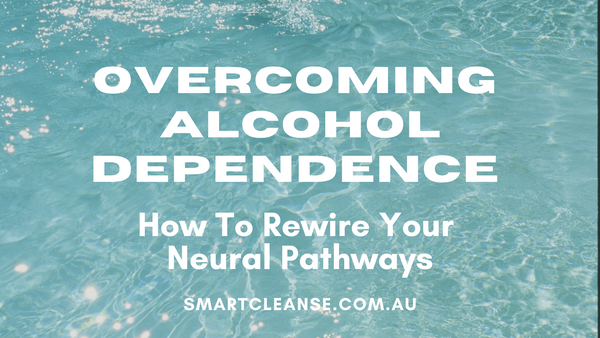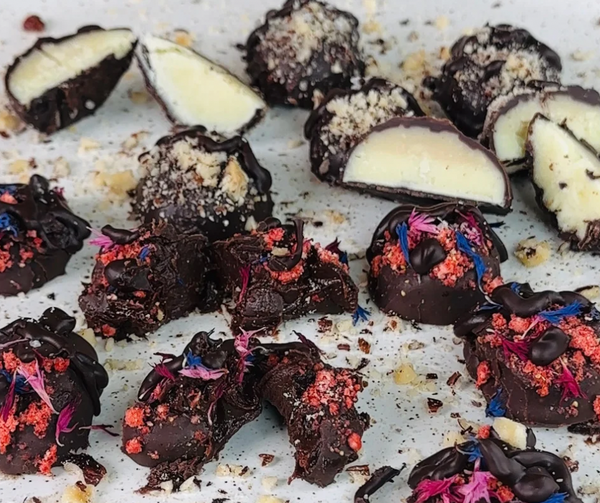Detoxification Due To Heavy Drinking Can Save Your Life

Cleansing is not just about loving your body, it’s about loving the greatest organ of detoxification and fat burning. It’s your secret weapon for life. Without it, you would die. When it is cleansed and healthy, your body and mind will thrive. Can you guess what organ we're talking about?
Your liver.
Your liver is one of the largest and most complex organs in your body. It stores vital energy and nutrients, manufactures proteins and enzymes necessary for good health, protects your body from disease, and breaks down harmful toxins like alcohol.1

Your liver is the ultimate multitasker. It also acts as a filter to remove toxins and ammonia resulting from the breakdown of amino acids from your blood. It aids in digestion by producing bile to help break down fat, absorbs fat soluble and water-soluble vitamins and minerals, and it plays a part in regulating glucose, blood pressure, blood sugar, insulin, estrogen, testosterone, immunity, and blood cholesterol production and removal.2
When it's overworked, toxic residues can build up, causing inflammation that is associated with obesity. A stressed liver can also cause fat to build up, especially around your belly.
This can mean that no matter how much you restrict your calories, weight loss is virtually impossible. Your liver is the chief organ responsible for metabolising alcohol and therefore it is especially vulnerable to alcohol related injury. It’s important to understand the connection between alcohol and the liver.
Alcohol should come with a warning sign, as it is a progressively fatal addiction and it can creep up on you due to an increasing level of drug tolerance that occurs, like with any drug.
Even as few as three drinks at one time may have toxic effects on the liver. The first stage of alcohol related injury is what this article is about – fatty liver, and how to reverse it.
Women Are Less Able To Tolerate Alcohol
Women are at higher risk than men for developing fatty liver and potentially cirrhosis (scarring of the liver). When a woman drinks, the alcohol in her bloodstream reaches a higher level than a man’s even if both are drinking the same amount.
Women’s stomachs may contain less of a key enzyme (alcohol dehydrogenase) needed for the initial breakdown of alcohol. Alcohol is metabolised at a slower rate, exposing her liver to higher blood alcohol concentrations for longer periods of time. This is a recipe for injury for your precious liver.
From Steatosis to Cirrhosis
When functioning normally, your liver filters out toxins and impurities from your blood, similar to the process of a pool filter filtering out debris from a swimming pool.
Alcoholic liver disease (ALD) includes three conditions: fatty liver, alcoholic hepatitis, and cirrhosis. They occur in that sequence of development. Heavy drinking for as little as a few days can lead to “fatty” liver, or steatosis—the earliest stage of alcoholic liver disease and the most common.
Steatosis is marked by an excessive build-up of fat inside liver cells. This condition can be reversed, however, only when drinking stops.1
Good news is once you stop drinking, your liver can heal steatosis in as little as 14 Days.
What Causes Fatty Liver
Fatty liver disease begins when your body stores lipids in your liver cells. This storage of fat in the liver diminishes its ability to filter toxins and prompts an inflammatory immune response, causing damage to liver tissue.
Drinking heavily for longer periods may lead to a more severe, and potentially fatal condition, alcoholic hepatitis—an inflammation of the liver. Symptoms include nausea, lack of appetite, vomiting, fever, abdominal pain and tenderness, jaundice, and sometimes mental confusion.
This inflammation eventually leads to alcoholic cirrhosis, in which healthy liver cells are replaced by scar tissue (fibrosis), leaving the liver unable to perform its vital functions.
The presence of alcoholic hepatitis is a red flag that cirrhosis may soon follow. Up to 70 percent of all alcoholic hepatitis patients eventually may go on to develop cirrhosis.1
Patients with alcoholic hepatitis who stop drinking may have a complete recovery from liver disease, or they still may develop cirrhosis.

Trust us, it’s smarter to nurture your liver. Prevention is always better than cure and your prevention and healing starts with 14 Day Smart Cleanse.
Herbal and Nutritional Treatment Solutions
Heavy drinkers are at risk of harmful, potentially life-threatening liver problems. Heavy drinking is classified as a woman who has more than seven drinks per week or more than three drinks per occasion, or a man who has more than 14 drinks per week or more than four drinks per occasion.
When you drink, your liver breaks down alcohol and removes it from your blood via a process known as ‘Phase 1 Liver Detoxification,’ where your liver converts fat-soluble toxins into reactive and inflammatory metabolic by-products (free radicals), more harmful than when they entered your liver.
When healthy, your liver successfully converts them into harmless water-soluble substances during ‘Phase 2 Liver Detoxification,’ and then they are excreted via your kidneys and urine, rather than ending up in vital organs. This is why liver cleansing and detoxification is so crucial to your health.
However, too much alcohol can overload Phase 1 Detoxification and these harmful free radicals will not be broken down, where they are left to damage your liver, other organs, and cause toxicity, immune activation, and inflammation throughout.
What does that mean? It means that you will feel flat, irritable and fatigued.
The only way out of this is by embarking on a practitioner grade detoxification program for a minimum of 14 days and up to 3 months depending on your individual needs.
How Liver Tests Show Alcohol Damage
Diagnosis typically relies on laboratory tests of three liver enzymes: gamma–glutamyltransferase (GGT), aspartate aminotransferase (AST), and alanine aminotransferase (ALT).
If you are concerned that you are not drinking moderately, then we recommend seeing your GP asap and getting a blood test to test these liver enzymes.
Many alcoholics suffer from malnutrition, which can lead to liver damage and impaired liver function. Many drinkers take in less than the recommended daily amount of carbohydrates, proteins, fats, vitamins A, C, E and B, especially thiamine (B1), and minerals such as calcium and iron.
Some alcohol-related liver damage can be reversed if you stop drinking alcohol early enough in the disease process. Healing can begin as early as a few days to weeks after you stop drinking. If the damage is severe, however, healing can take several months.
In 14 days to 3 months, your liver and entire system will without a doubt have benefited enormously from giving up alcohol. Not only will medical changes occur, like increased hydration on a cellular level and improved liver function, you’ll notice other changes as well.
You’ll sleep better, may lose weight, and with a better balance of hormones you will even notice an increase your sex drive. Your stomach and skin will also have benefitted from not dealing with alcohol. You will appear younger too and you will glow like a star.
How Long Does It Take For Your Liver to Heal?
If you stop drinking alcohol for two weeks, your liver should return to normal, depending on what stage your liver is at.
How To Treat Fatty Liver
Treating fatty liver is a multifaceted process. It’s not just about limiting the amount of alcohol you consume or cutting down on binge drinking.
All of the following are usually necessary to treat fatty liver:
- Lifestyle modification like: Avoiding alcohol and stopping smoking
- Losing weight and getting active
- Minimising stress hormones and excess insulin production from too much stress, sugar and carbohydrates
- Getting plenty of sleep
- Drinking more purified water
- Eating enough fibre and prebiotics
- Decrease consumption of refined salt
- Appropriate nutritional vitamin supplementation
- Intermittent fasting can be an effective intervention to reverse liver disease and improve liver health.
- Other foods that reverse fatty liver : green tea, blueberries, citrus fruits, grapes, beetroot juice, cruciferous vegetables. Antioxidant rich foods in a nut shell.
Delicious Alcohol-Free Drinks
If you’re looking for ways to cut back on drinking, you can try some delicious alcohol-free drinks instead, such as:
- Kombucha: This fermented and naturally lightly sparkling drink is made from black or green tea and a sprinkling of bacteria
- Mineral water with fruit in it
- Alcohol-Free Sparkling Wine
- Sparkling Juices
- Booze-free beer
- Mocktails
- Alcohol-Free Gin
- Herbal teas
- Lemon and warm water
- Purified, alkaline water is your go to!
What About Glutathione? Why is it important?
Glutathione production, sometimes called the "mother of all antioxidants," is the key mechanism for the liver to protect itself against free radical damage and toxin-induced inflammation.
However, the problem is that when lipids accumulate in the liver, glutathione production is suppressed. This causes a negative feedback loop where the liver is less able to protect itself from this inflammation, leading to additional fat accumulation in the liver and further progression of Fatty Liver.
As a result, your liver is unable to effectively perform one of its major responsibilities – to detoxify your body. Toxic overload is where disease thrives so 14 Day Cleanse is the best place to start to cleanse and reverse fatty liver.
There is always a solution. New scientific research has discovered several natural ingredients that boost production of glutathione and guard your liver against damage caused by free radical inflammation.3
Glutathione (GSH) cannot be used as a supplement because this substance cannot directly enter the cells threatened by oxidative stress.
However, researchers are using a precursor compound, the molecule S–adenosylmethionine (SAMe), which can enter the cells and then break down to form a bioavailable and therapeutic dose of glutathione.
When SAMe was given to patients with alcoholic cirrhosis in a clinical trial, they were significantly less likely to die or require a liver transplant within the next 2 years, compared with patients who had received an inactive substance (placebo).
Moreover, the study detected virtually no harmful side effects of SAMe treatment. Thus, this approach appears to hold promise for the treatment of patients with ALD.1
What Other Supplements and Foods Can You Eat to Enhance Glutathione Production?
Your body needs key building blocks to manufacture glutathione. Certain foods and nutrients are known to provide them.
Eating these building blocks can increase the body’s production of glutathione. These include selenium, vitamin E, cruciferous vegetables, alpha-lipoic acid, milk thistle, and N-acetyl cysteine.4

Although diet and exercise changes are highly beneficial, you can also take herbs that protect you against liver inflammation caused by free radical damage, that also detoxify inflammatory toxins from your body and are liver protective and liver regenerative. Here are a few highly beneficial liver herbs that will help reverse fatty liver in our Smart Cleanse Liver Tonic.
Liver Tonic is part of our full 14 Day Smart Cleanse program if you were wanting a complete practitioner grade cleanse to reboot your gut and entire system as well.
Silybum Marianum (Milk Thistle)
Has been clinically proven to guard against free radical damage in the liver by promoting production of glutathione and other antioxidants.
Silymarin is an antioxidant that protects your liver from the free radical damage produced by alcohol metabolism. Silymarin is the most used natural compound for the treatment of hepatic diseases worldwide due to its antioxidant, anti-inflammatory, and anti-fibrotic activities, so it’s highly effective at reversing chronic liver disease (fibrosis) and chronic hepatitis C (as it’s antiviral).
Cynara Scolymus (Artichoke)
Researchers have found that globe artichoke extracts also have protective effects on your liver even when liver inflammation is present and can reverse damage, so that ALT and AST enzyme levels start to fall.
In a gold-standard, randomised, double-blind, placebo-controlled trial, researchers asked 60 people with non-alcoholic fatty liver plus inflammation to take either globe artichoke extract (as 6 tablets per day providing 2700 mg) or placebo for two months. In those taking the globe artichoke extracts, however, levels of triglycerides and total cholesterol also reduced significantly.5
Fallopia Japonica (Giant Knotweed)
Giant knotweed contains a wide spectrum of chemical compounds offering herbal benefits. Together with resveratrol, these substances offer potent antioxidants, as well as cardiovascular, nervous system, and liver function support.
Trans-resveratrol is the chemical form of resveratrol best absorbed and utilised by the body. While red grapes are high in resveratrol, it must be converted into trans-resveratrol in the body. Giant knotweed contains mostly trans-resveratrol, making it the preferred, more bioavailable source.
Considering the amount of free radicals that your phase 1 liver detoxification pathways produce, antioxidants are your best protection against liver disease progression.6
Schisandra Chinensis
The phyto-chemicals in schisandra improve liver function by stimulating enzymes (proteins that speed up biochemical reactions) in your liver and promoting liver cell growth. Phyto-chemicals in schisandra may also help the body have more energy, resulting in improved endurance because it’s what’s known as an adaptogen in herbal medicine, which is a phyto-chemical that restores adrenal function.
Take care of your liver. Let go of those habits that harm it or at least take regular breaks. Prevention all the way.
References
(1) https://pubs.niaaa.nih.gov/publications/aa64/aa64.htm
(2) https://www.shape.com/weight-loss/tips-plans/weight-loss-secret-you-ve-never-heard
(4) https://askthescientists.com/qa/liver-detoxification-pathways/






